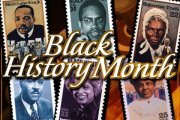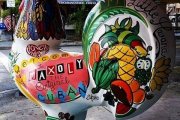Life & English
The event is held at Son Tinh Camp on the shores of the majestic Dong Mo Lake.
In the soup kitchen, the warm dinners were more meaning than food or money.
In the community meal, we understood about the expression “Break Bread”. It means to share a meal with someone and this expression means more than just eating
Design Postage Stamps for Black History Month is a good way to commemorate.
Vietnamese people have 2 new years: New Year’s and Lunar New Year...
In the middle of Sunny Isles Beach, when I was walking and shopping, suddenly I saw Kalinka, Matryoshka and Samovar on signboards and of the shops.
It is good time to review on the past year and to prepare for the new year.
Cyber Monday has become an international marketing term used by online retailers across the world












